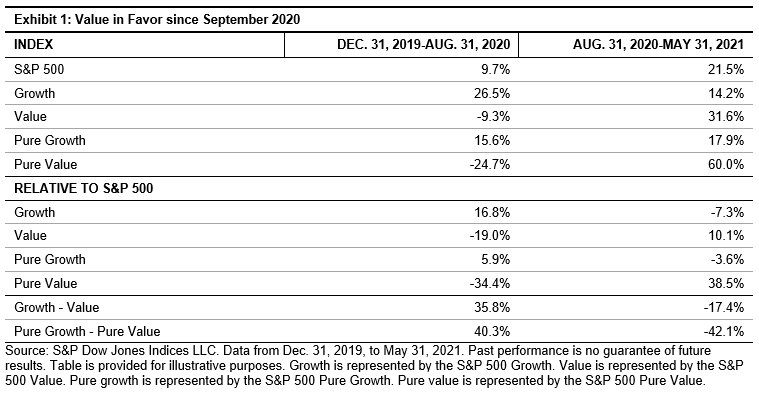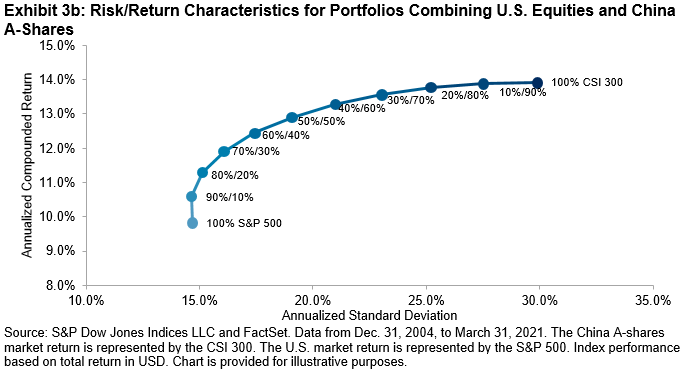In part 1 of this two-part blog series, we discussed the characteristics of the S&P GSCI Dynamic Roll and the two main concerns this index attempts to alleviate, which are negative roll yield and volatility in commodities futures. Diving a bit deeper, we explore the recent performance of a diversified hypothetical portfolio when the S&P GSCI Dynamic Roll is added. Typical allocations to commodities beta range from 2%-20%. After years of commodity underperformance, most market participants’ commodities allocations are no longer at the higher end of the range, despite positive supply/demand catalysts for many individual commodities and the inflation hedging potential of commodities. The May 2021 U.S. CPI reading was +5.0%, a further surprise to the upside after a higher-than-expected 4.2% in April. Exhibit 1 shows how adding a 5% allocation of the S&P GSCI Dynamic Roll provided the same risk-adjusted performance over time but with added inflation protection.

Historically, drawdowns have tended to be less severe for the S&P GSCI Dynamic Roll when compared with the broad commodity S&P GSCI. Exhibit 2 shows the performance of the S&P GSCI Dynamic Roll during the recent market corrections—the initial COVID-19 lockdown in 2020, the 2014 oil price collapse, and during the Global Financial Crisis. During last year’s pandemic lockdown-induced sell off, the headline S&P GSCI fell by more than 50%, while the S&P GSCI Dynamic Roll had a drawdown of 37%, in line with the drop in the S&P 500®. By not always holding exposure in the most active near-dated futures contracts, the downside performance is buffered because exposure is further out the futures curve in less volatile contracts and contracts that do not reflect spot supply and demand dynamics. The S&P GSCI Dynamic Roll weathered the storm better than other broad commodity market exposures.

For more information on this increasingly popular index strategy, visit our website to learn more. For a more detailed look at the S&P GSCI Dynamic Roll, be sure to read part 1 of this two-part series or check out the S&P GSCI Dynamic Roll Methodology.
The posts on this blog are opinions, not advice. Please read our Disclaimers.














































 With many of the 24 commodity constituents of the S&P GSCI in backwardation in 2021, a positive catalyst in the form of a positive roll yield is one of the current reasons to look at commodity exposure. After years of negative roll yields, investors are being rewarded for holding commodity exposure. The S&P GSCI Dynamic Roll is designed to benefit from backwardation by holding positions at the front of the futures curve.
With many of the 24 commodity constituents of the S&P GSCI in backwardation in 2021, a positive catalyst in the form of a positive roll yield is one of the current reasons to look at commodity exposure. After years of negative roll yields, investors are being rewarded for holding commodity exposure. The S&P GSCI Dynamic Roll is designed to benefit from backwardation by holding positions at the front of the futures curve.






